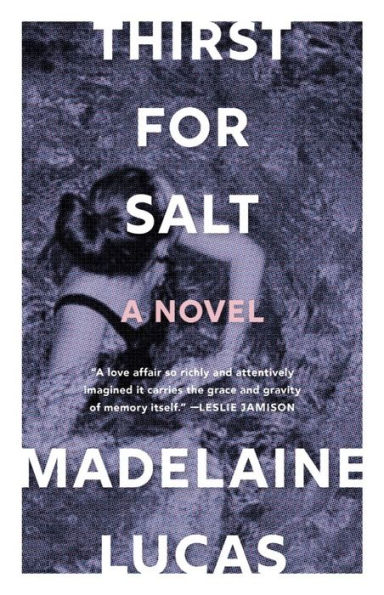Thirst for Salt: A Novel
- By Madelaine Lucas
- Tin House
- 272 pp.
- Reviewed by Norah Vawter
- April 5, 2023
Now older, a woman reflects on a fraught May-December romance.

At the center of Madelaine Lucas’ debut novel, Thirst for Salt, is an affair between a young woman and a man 18 years her senior. The author manages to examine the complex, uneven power dynamic of such a relationship, weaving it into a surprisingly earnest though never sentimental story of first love. The gorgeous prose drew me in immediately, as did the inviting backdrop of the Australian coast.
The unnamed narrator is 24 and on summer holiday with her mother. They rent an old whaler’s cottage in Sailors Beach, a sleepy tourist town. There, she meets 42-year-old local Jude while swimming and is soon caught up in a passionate, overwhelming affair. Almost as quickly, she gives up her apartment and job in Sydney to move in with Jude, seizing the chance to root herself to a place and a person in a way she’s never done before. But she also must put up with his condescension, his habit of treating her like a child, and the reality of their age gap:
“I’d chosen to anchor myself here, in this watery place. I wanted to believe, back then, that we’d grow old together — or rather that I’d grow old and he’d grow older, for there was no way to bridge that gap in time. But maybe we could hope for a sanding down of those rough edges, the way time wears away at all of us, until we reached a state of greater equilibrium.”
The Australian-born Lucas writes in exquisite prose full of longing and lyricism, making this a novel of small moments unfolding in a relatable, lived-in world. She delivers a thoughtful, reflective narrative that focuses on memory and on a character trying to understand human nature, her place in the world, and what love is. Such philosophical pondering is hard to do well, yet Lucas pulls it off by never falling into pretension or showing off, such as here:
“Metaphors are lies, one of my professors had said in a lecture during my first year of university. How then, I might argue with her now, in the absence of figurative language, are we supposed to talk about love? Love, we say, and expect the word to hold so many things.”
We know from the beginning that the affair at the center of the book is doomed because the narrator is looking back on it from a decade later. But the stakes remain high because we want to learn why the relationship ended; nothing about it is black and white. As the narrator puzzles over Jude in order to make sense of her present life, her memories become necessary.
Not just a love story, however, the novel is also a coming-of-age story and the story of a mother and daughter. In fact, the mother-daughter aspect of the tale is a powerful, complicated presence on its own. Sailors Beach is precious to the narrator, in part, because she visited it with her parents when they were still together. It came before the flyaway life she later had with her mother, in which men, like houses, were always temporary.
Powerful writing aside, I do have quibbles with the book. Side characters can be quirky to the point of caricature, like when the narrator’s housemate stares at Jude until he grows uncomfortable, explaining, “I’m just picturing the way he fucks.” Dialogue — and there’s quite a bit of it — is written without quotation marks, a stylistic choice that sometimes pulled me out of the story. The narrator is also better at grasping things intellectually than emotionally, and the heavy use of metaphors can keep the reader at a remove. And yet, weeks after finishing it, I’m still living inside Thirst for Salt. I highly recommend it.
Norah Vawter is a freelance writer, editor, and the Local Authors editor of online magazine DCTRENDING.com.

